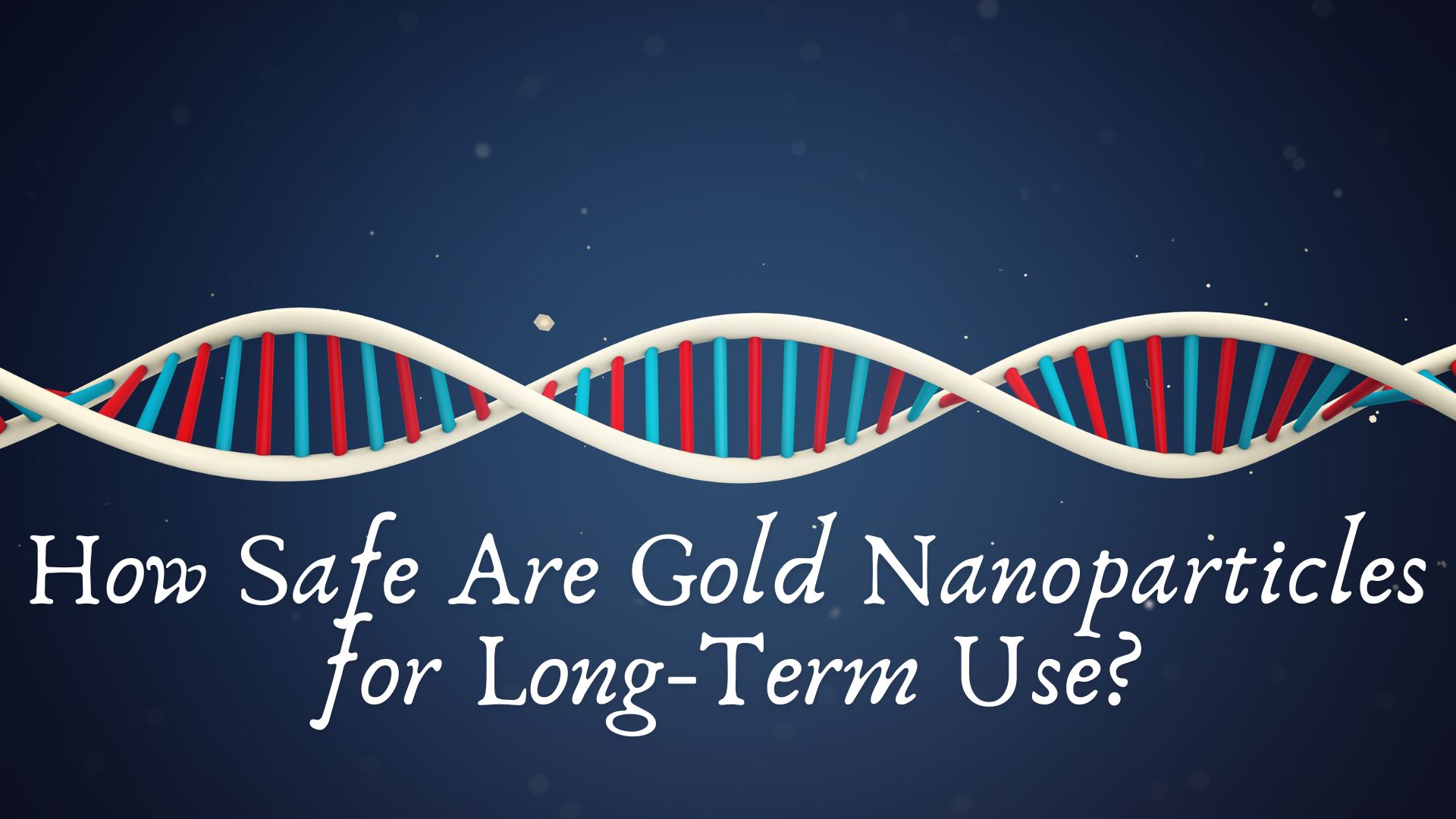How Safe Are Gold Nanoparticles for Long-Term Use?
Gold nanoparticles (AuNPs) have emerged as one of the most promising materials in nanotechnology due to their unique physical, chemical, and biological properties. From drug delivery and imaging to diagnostics and cancer therapy, gold nanoparticles are central to a range of biomedical and technological applications. However, as these particles find their way into increasingly diverse uses, a critical question has surfaced among researchers, clinicians, and regulators: How safe are gold nanoparticles for long-term use?
In this comprehensive article, we explore the current understanding of the safety profile of gold nanoparticles, examine recent research on their long-term effects, and evaluate the key factors that influence their biocompatibility and potential toxicity.
What Are Gold Nanoparticles?
Gold nanoparticles are tiny particles of gold with dimensions typically ranging from 1 to 100 nanometers. At this scale, gold exhibits extraordinary properties, including surface plasmon resonance, high surface-area-to-volume ratio, and easy surface functionalization.
These characteristics make gold nanoparticles ideal for:
- Targeted drug delivery systems
- Photothermal cancer therapy
- Imaging and diagnostics
- Sensors and biosensors
- Gene therapy and vaccine delivery
Despite their technological advantages, their small size allows them to interact intimately with biological systems, which raises important safety concerns.
Routes of Exposure and Biodistribution
Understanding how gold nanoparticles enter and travel through the body is crucial in assessing long-term safety. Common routes of exposure include:
- Inhalation: From industrial or laboratory settings
- Ingestion: Through contaminated water or food
- Injection: In biomedical applications
- Dermal contact: In cosmetic or pharmaceutical products
Once inside the body, gold nanoparticles can circulate through the bloodstream and accumulate in organs such as the liver, spleen, kidneys, lungs, and even the brain. Their distribution depends on several factors, including particle size, shape, surface coating, charge, and the method of administration.
What Does the Research Say?
Short-Term Studies
Numerous studies have demonstrated that gold nanoparticles are largely biocompatible and non-toxic at low concentrations in short-term use. For example:
- In vitro (cell culture) experiments often show minimal cytotoxicity, especially with spherical AuNPs coated with biocompatible materials like polyethylene glycol (PEG).
- In vivo studies on rodents have reported little to no acute toxicity when AuNPs are administered in controlled doses.
Long-Term Exposure Studies
The long-term impact of gold nanoparticles is more complex and less understood. Emerging research reveals that prolonged exposure can have subtle but significant biological effects:
- Accumulation in Organs: Chronic exposure may lead to the gradual buildup of AuNPs in the liver, spleen, and kidneys, raising concerns about organ stress or impaired function.
- Immune System Interaction: Long-term presence of nanoparticles can trigger chronic immune responses or inflammation in some cases.
- Genotoxicity: While gold itself is inert, some studies have indicated potential for DNA damage depending on surface chemistry and particle size.
- Oxidative Stress: Some findings suggest that uncoated or poorly stabilized nanoparticles may induce oxidative stress, which can lead to cellular damage.
It’s important to note that most adverse effects are dose-dependent and influenced by the physicochemical properties of the nanoparticles.
Factors Influencing Long-Term Safety
Size and Shape
- Smaller particles (<10 nm) tend to be more reactive and can cross biological barriers more easily, including the blood-brain barrier.
- Shape also matters; rod-shaped particles may have different uptake and clearance profiles compared to spherical ones.
Surface Coating
- Biocompatible coatings like PEG, citrate, or silica can reduce toxicity and improve circulation time.
- Surface modifications can influence immune recognition, cellular uptake, and excretion rates.
Dose and Frequency
- High doses or repeated exposure increase the likelihood of long-term accumulation and adverse effects.
- Careful dosing is critical, especially in therapeutic contexts.
Route of Administration
- Intravenous or intratumoral injection has different safety implications than oral or inhalation exposure.
- Controlled delivery methods can help localize effects and reduce systemic toxicity.
Clearance and Excretion
One of the major challenges for long-term safety is how the body clears gold nanoparticles. Studies suggest that:
- Larger particles (>15 nm) are often retained in the liver and spleen for extended periods.
- Smaller particles (<5 nm) are more likely to be excreted through the kidneys.
- Surface chemistry affects whether nanoparticles are metabolized, broken down, or remain intact in tissues.
Incomplete clearance could lead to bioaccumulation and unpredictable biological consequences over time.
Regulatory and Clinical Perspectives
Regulatory agencies such as the FDA and EMA have recognized the potential of gold nanoparticles in medicine but stress the need for rigorous safety assessments. Clinical trials using AuNPs (e.g., for cancer therapy or vaccine delivery) are currently underway, and so far, early results indicate acceptable safety profiles.
However, for regulatory approval, long-term toxicity, carcinogenicity, reproductive toxicity, and environmental impact must be evaluated systematically.
Environmental and Secondary Safety Concerns
Beyond human health, there are also ecological concerns. Gold nanoparticles released into the environment (through wastewater, manufacturing processes, or biomedical waste) may affect aquatic ecosystems or soil microbiota.
Research in nanotoxicology is beginning to examine the broader ecological footprint of nanomaterials, including AuNPs, as part of sustainability assessments.
Conclusion: A Balanced View of Safety
Gold nanoparticles hold immense promise for science and medicine, but their long-term safety is not yet fully understood. Current evidence suggests that they are generally safe in controlled, short-term applications—especially when appropriately coated and dosed. However, long-term exposure and accumulation pose potential risks that need further investigation.

